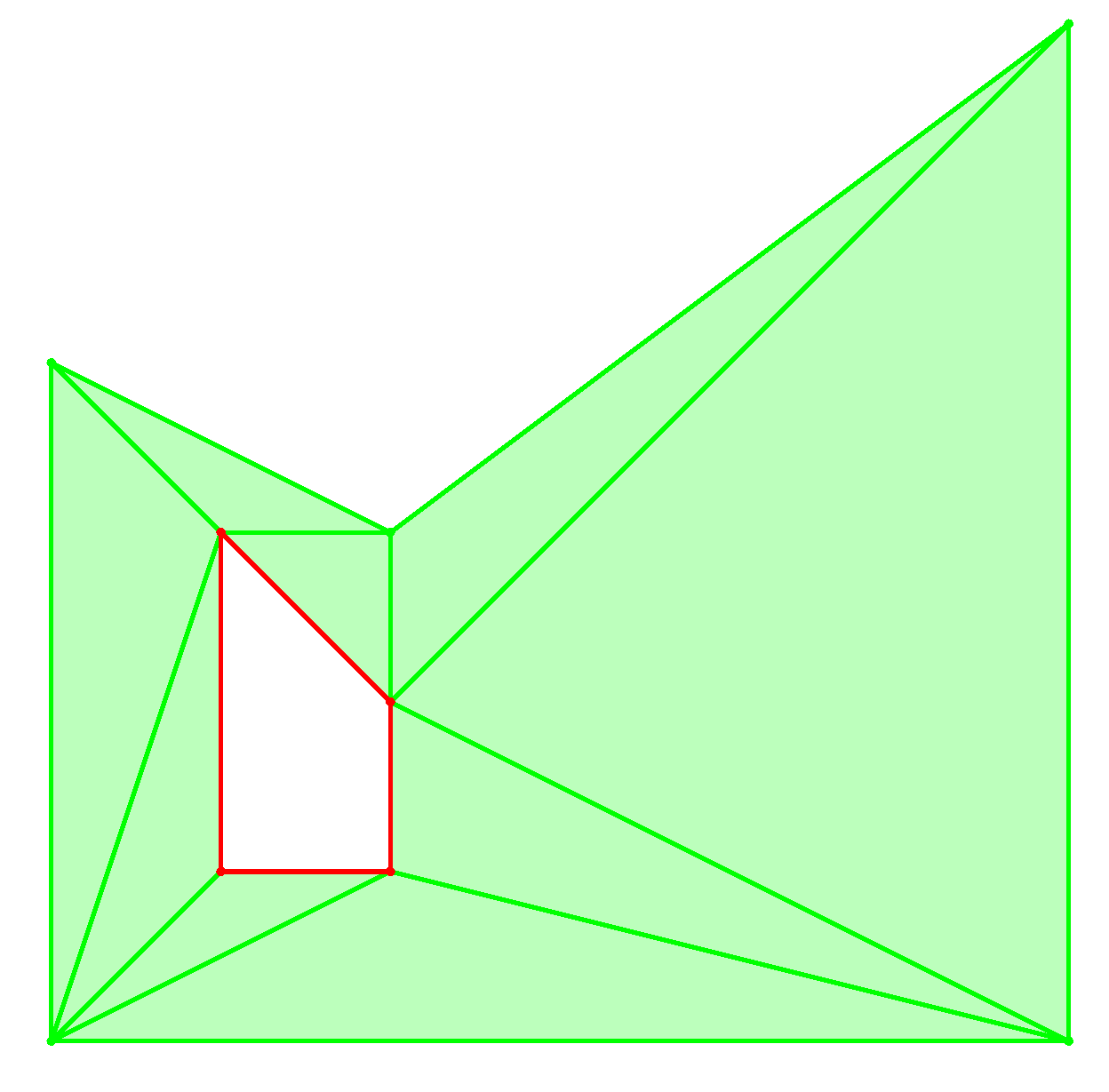Shapes
It is recommended to run the examples in this section in release mode, as the checks performed in debug mode can cause a significant slowdown.
Plotting
To plot a 2D shape, you must create a 2D canvas object, plot any shapes, and run the canvas. A simple example is shown
use algebraeon::drawing::canvas::Canvas;
use algebraeon::drawing::canvas2d::Canvas2D;
use algebraeon::drawing::canvas2d::MouseWheelZoomCamera;
use algebraeon::geometry::parse::parse_shape;
let shape = parse_shape(
"Polygon((0, 0), (6, 0), (6, 6), (2, 3), (0, 4)) \\ Polygon((1, 1), (2, 1), (2, 2), (1, 3))",
);
let mut canvas = Canvas2D::new(Box::new(MouseWheelZoomCamera::new()));
canvas.plot(shape);
canvas.run();It produces the following plot, in an interactive 2D viewer:

Green areas indicate points that are part of the shape. Red areas indicate boundary points that are not part of the shape.
Loading a Shape From a String
The supported syntax when loading a shape from a string:
Point(<point>): A single point.Lines(<points>): The union of line segments connecting each consecutive pair of points in the list.Polygon(<points>): The closed polygon whose vertices are those given. Only works in 2D.PolygonInterior(<points>): The interior of the polygon whose vertices are those given. Only works in 2D.Loop(<points>): The union of line segments connecting each consecutive pair of points in the list, including the line segment connecting the first and last point.ConvexHull(<points>): The convex hull of the provided points.ConvexHullInterior(<points>): The interior of the convex hull of the provided points. The interior is taken with respect to the affine subspace spanned by the points.ConvexHullBoundary(<points>): The boundary of the convex hull of the provided points. The boundary is taken with respect to the affine subspace spanned by the points.ShapeA | ShapeB: The union of shapes.ShapeA & ShapeB: The intersection of shapes.ShapeA \ ShapeB: The difference of shapes.ShapeA + ShapeB: The Minkowski sum of shapes.